Why is my baby’s room temperature important?
Whether you’re a new parent or a decorated veteran of newborn nurturing, the question “How well is my little one sleeping?” is likely to have run through your mind at least once or twice. And, as we all know, temperature has a huge role to play in the quality of our sleep — from how easy it is to drift off, to the likelihood of waking up during the night.
However, babies can’t regulate their body temperature as easily as adults, so they’re much more vulnerable to temperature-related sleep disturbances.
A baby who’s too chilly or too warm may become restless, agitated, and uncomfortable, making it much harder for them to settle down. In more extreme cases, overheating may even raise the likelihood of SIDS (sudden infant death syndrome).
Your little one is actually more sensitive to temperature once they enter deep sleep, so it’s important to keep close tabs on how warm (or cold) their environment is while they catch some much-needed Zs.
What’s the ideal room temperature for my baby?
The general guidelines state that it’s best to keep your baby’s room between 68 and 72°F (20-22°C).This provides the perfect level of warmth and coziness without any risk of overheating.
Of course, if your baby prefers it a little warmer or cooler than this, don’t feel obligated to keep the room within this range. The ultimate goal is to create an environment as conducive to a good night’s sleep as possible. Make small adjustments as you go, and figure out what works best for your little one.
Measuring the temperature of your little one’s room (or your own if they’re sleeping in a bedside crib) is super simple. Digital room thermometers can be found online for as little as $5-10, and most modern baby monitors come with a built-in thermometer.
How to tell if your baby is too hot or too cold
Due to their inability to communicate — that stage will come soon enough, but let’s worry about the here and now — you’ll need to keep an eye out for any signs that your baby might be too hot or cold. If you notice any of the cues listed below, it’s time to make some temperature adjustments.
Rather than simply checking your baby’s hands or feet, feel their chest or the back of their neck. These areas can give you a better sense of your baby’s body temperature. Listen to their breathing, too — rapid breathing is a solid indicator that it’s time to cool them down.
Signs your baby is too hot:
Sweaty skin or hair. If you notice that your baby’s skin feels damp or sweaty, especially on their back or neck, they might be getting too warm.
Flushed cheeks. Warm, red cheeks can be a clue that your baby is overheated.
Restlessness. An overheated baby may become fussy or have trouble settling down for sleep.
Rapid breathing. Overheating can sometimes cause faster breathing, so if you notice this, it might be time to cool things down.
If your baby is too hot, try removing some of their clothing layers. A fan might help too, but don’t point it in their direction, as this might cause the opposite problem and make them too chilly! Placing a cool washcloth on their skin for a moment or too may also help, but if it doesn’t, it may be better to move them to a different room entirely until their bedroom temperature falls within the recommended range.
Signs your baby is too cold:
Cool hands and feet. While cold hands and feet aren’t always a reliable indicator (they can feel cold even when the rest of their body is warm), if they’re cold to the touch, it might be too chilly.
Shivering. Although not common, shivering can be a sign that your baby is too cold and needs warming up.
Lethargy or fussiness. If your little one is unusually lethargic or fussy, it might be because they’re trying to conserve their warmth.
If your baby is too cold, add an extra layer of clothing. If they haven’t learned how to roll over yet, it’s also safe to swaddle them in a snuggly single blanket (just be sure to follow the AAP’s recommended swaddling technique).
How to create a safe sleep environment for your baby
Once you’ve got the temperature in that perfect sweet spot (between 68-72°F), the next step is making sure your baby’s environment is primed for slumber time. A few simple adjustments can make a world of difference, so if you’re struggling to get your baby to drift off, try out some of the tips below:
How to dress your baby for bedtime
In warmer months, light, breathable fabrics like cotton are your baby’s best friend. A simple onesie or light pajamas paired with a lightweight sleep sack (1 Tog or below is ideal) will keep your tot cool and comfortable.
In the colder seasons, layer them up with a snug, long-sleeved onesie, and a slightly warmer sleep sack — between 1-2.5 Tog. Unless swaddling, do not use a blanket — this can pose a significant risk to your baby if they’re below 12 months of age. You also shouldn’t cover a swaddled baby with a second blanket as this can cause overheating.
Is it safe to use a fan, heater, or humidifier in my baby’s room?
A fan can be a great tool for keeping your baby cool on warmer evenings. Some studies even suggest that increasing air circulation can reduce the risk of SIDS by up to 72%. Just make sure that the fan isn’t blowing directly on your baby, and that it’s at a safe distance from their crib or bassinet. Aim for a gentle breeze, rather than an icy gale!
Space heaters are useful in cooler rooms, but again, make sure it’s positioned well away from your baby’s sleeping spot, and never aim it directly at them. Monitor the temperature closely, too — we’d only recommend this option if you’ve got a digital thermometer to hand.
Humidifiers can come in handy during dry seasons, where low humidity can lead to congestion or dry skin. A humidity level of 30-50% is ideal for your tot, and will promote easier breathing.
Do I need a thermometer for my baby’s room?
There’s no rule saying you must use a thermometer to measure your baby’s room temperature, but we highly recommend grabbing one.
Widely available and affordable, there’s little reason not to pick one up — they’re well worth the investment for the peace of mind of knowing your baby’s room temperature is optimal. This said, if you’ve got a baby monitor, you might not even need to spend any more money, as most modern units come pre-fitted with a digital thermometer.
Is there a link between room temperature and sudden infant death syndrome?
Yes, A 2018 study into SIDS found a connection between increased temperatures and a raised likelihood of SIDS mortality. While we still don’t fully understand all the causes of SIDS, what we do know is that keeping your baby’s sleep environment at the right temperature — between 68-72°F (20-22°C) — can help reduce the risk.
If it’s summer and the room gets a little hotter, or in winter when the house might be colder, you’ll want to adjust what they’re wearing or how you’re warming the room — but always be mindful of avoiding overheating.
If you’ve ever tried to sleep in a room that’s either swelteringly hot or icy cold, you’ll know how hard it can be to drift off and avoid tossing and turning through the night. It’s no different for your little one, which means setting the right ambient temperature is really important.
The best room temperature is generally between 68-72°F, but it’s important to pay attention to your baby’s cues to determine if they’re too hot, too cold, or in the words of Goldilocks, they’re “juuust right”.
Sleep temperature FAQs
Is 24 degrees OK for a baby’s room?
A room temperature of 24°C (75°F) is on the warmer side for a baby’s room. While it’s a bit higher than the ideal temperature of 68-72°F (20-22°C), you can adjust by dressing them in lighter layers and using breathable fabrics to help your baby sleep safely.
What age can a baby regulate their own body temperature?
Babies typically start to better regulate their own baby’s temperature around 12-18 months. However, before this, it’s important to manage the baby’s room temperature to ensure they aren’t getting too hot or too cold during sleep.
What’s the best way to monitor my baby’s room temperature?
Using a room thermometer or a baby monitor with a built-in sensor allows you to easily keep track of your baby’s room temperature, ensuring it stays within the ideal temperature range.
What is the safest way to keep my baby warm without overheating?
The key to a safe sleep environment is using a sleep sack or wearable blanket instead of loose bedding. This helps regulate your baby’s temperature while preventing overheating.
What should I avoid putting in my baby’s crib?
To maintain a safe sleep environment, keep your baby’s crib free of pillows, blankets, and stuffed animals. Stick to a fitted sheet and appropriate sleepwear — breathable cotton is best.
Reviewed by Rosey Davidson, Sleep Consultant, founder & CEO, in November 2024.

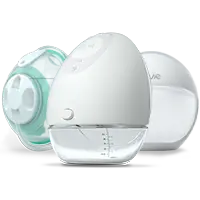
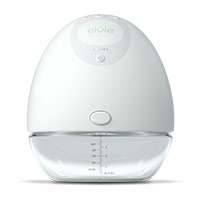
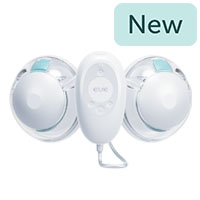
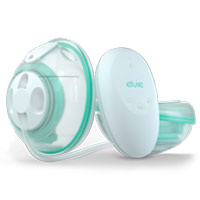
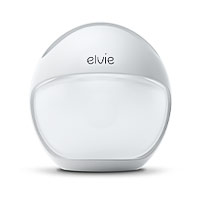
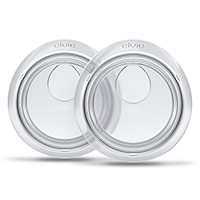
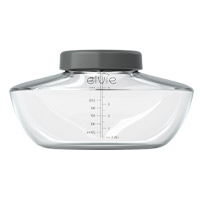
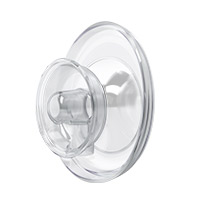

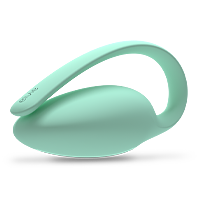
 9 minute read
9 minute read